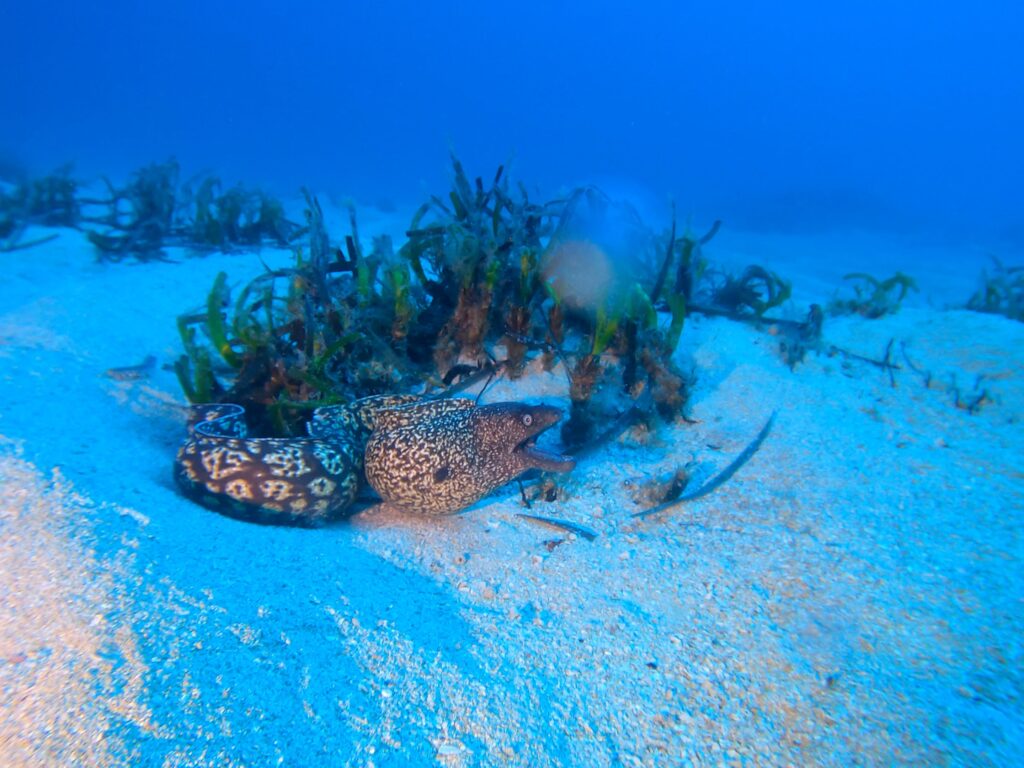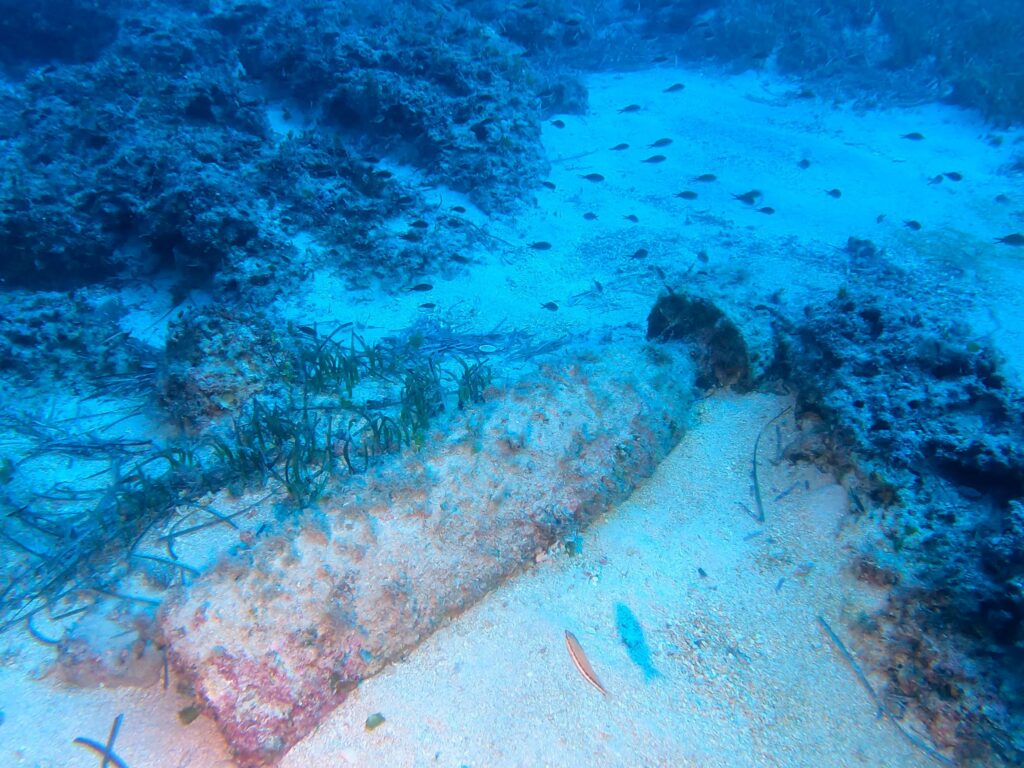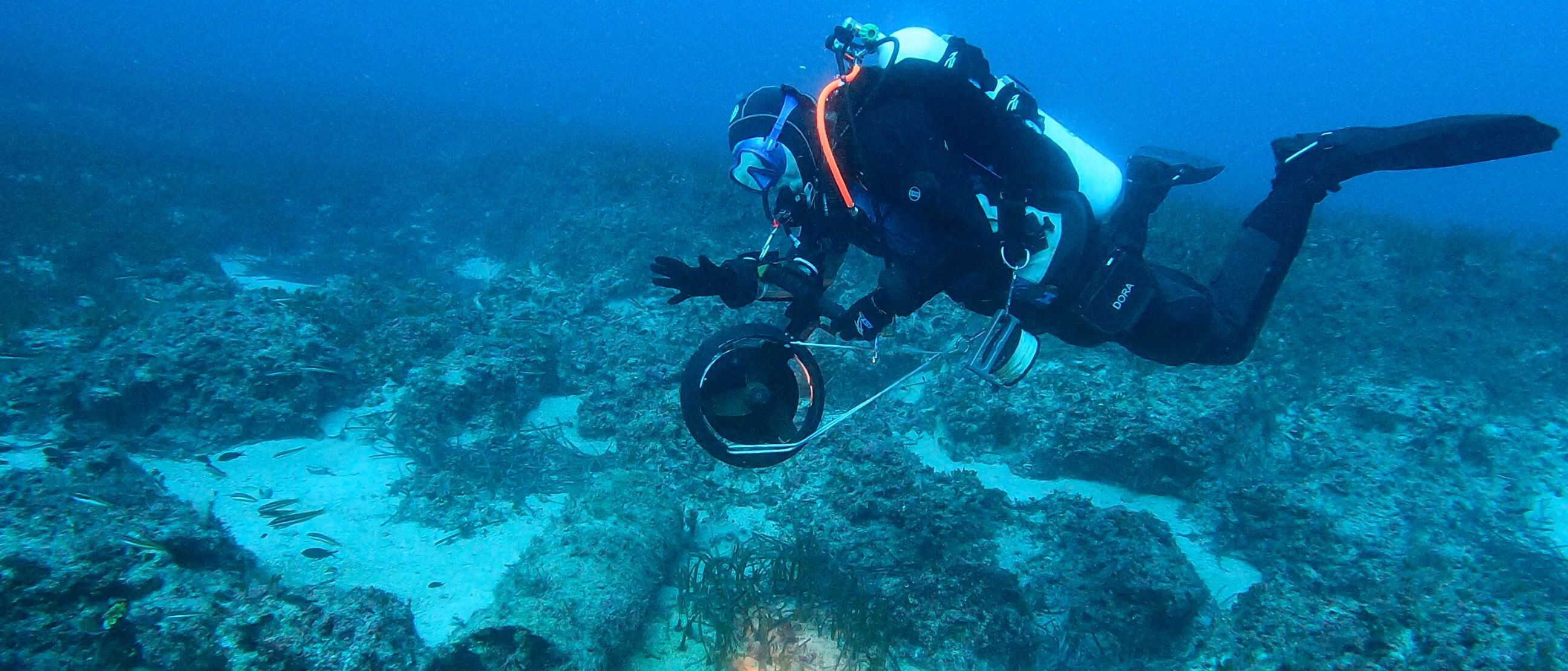We headed out to the open sea, greeted by beautiful weather – the sun was radiating warmth and illuminating the surroundings. Although there was a noticeable surface current in the sea, there were few waves, making it an ideal day for diving.
Among our planned dive sites were:
1) Casper – an unidentified steam-powered ship.
2) The Neptune, a military fighter jet that is prominent in the local movie industry.
Our initial goal was to check the GPS coordinates of these locations. Casper, in particular, intrigued us because it was rarely explored. Oddly, most local divers talked about their experiences diving with it, emphasizing the unusual recreational depth.
Our first dive took place in Casper. The chartplotter showed a depth of only 28 meters, while 35 meters had been previously reported. Armed with underwater scooters, we began our search.
Descending to deeper water, we surveyed the area, but Casper was slipping away. Despite the excellent visibility, vast meadows of Poseidonia and schools of fish, our target remained elusive. Feeling a slight current, we decided to conduct a systematic search toward the open sea, following azimuth 210 for about 5 minutes.
The underwater landscape was extensive Poseidonia meadows interspersed with isolated barren areas and pristine birch sandbanks. There were small fish scurrying around, with occasional sightings of bright green moray eels.

During the second leg of our trip, following a 30 degree azimuth and pausing to take pictures with eels, we came across a colossal piece of ordnance. Overgrown with algae and with no visible markings, it remained obscure in its origin. Having no knowledge of World War I and World War II munitions, I invite readers to offer their insights in the comments.


We did not mark the location of the ammunition as we still had a chances of finding Casper and time was already pushing us to decompression stops. So we continued on our way and after a minute we made another 90 degree turn to complete the quad.
Unfortunately, like Casper, we couldn’t find our anchor and decided to do a surfacing in the water column. When we surfaced, it turned out that we were about 100 meters from the dive start point, on a 120 degree azimuth – which meant we just didn’t make it to the anchor (the current had contributed).
Follow us and sign up for the newsletter so you don’t miss the opportunity to participate in the next “Finding Casper” expedition.
Create your own diving expedition.
You can discuss the article and leave comments in the Facebook group or in the comments below.

